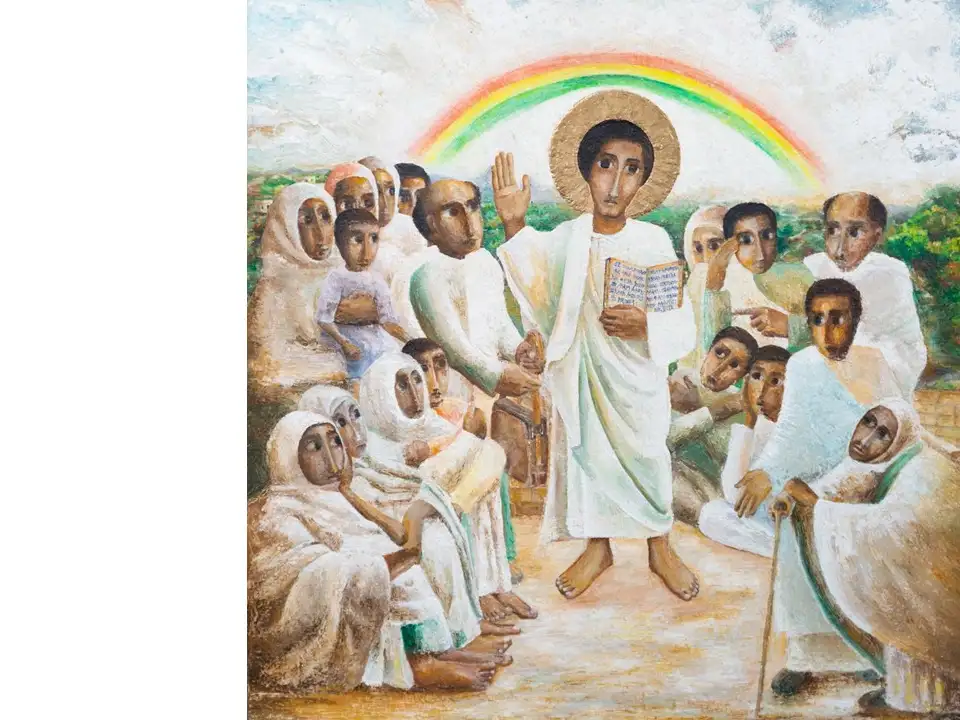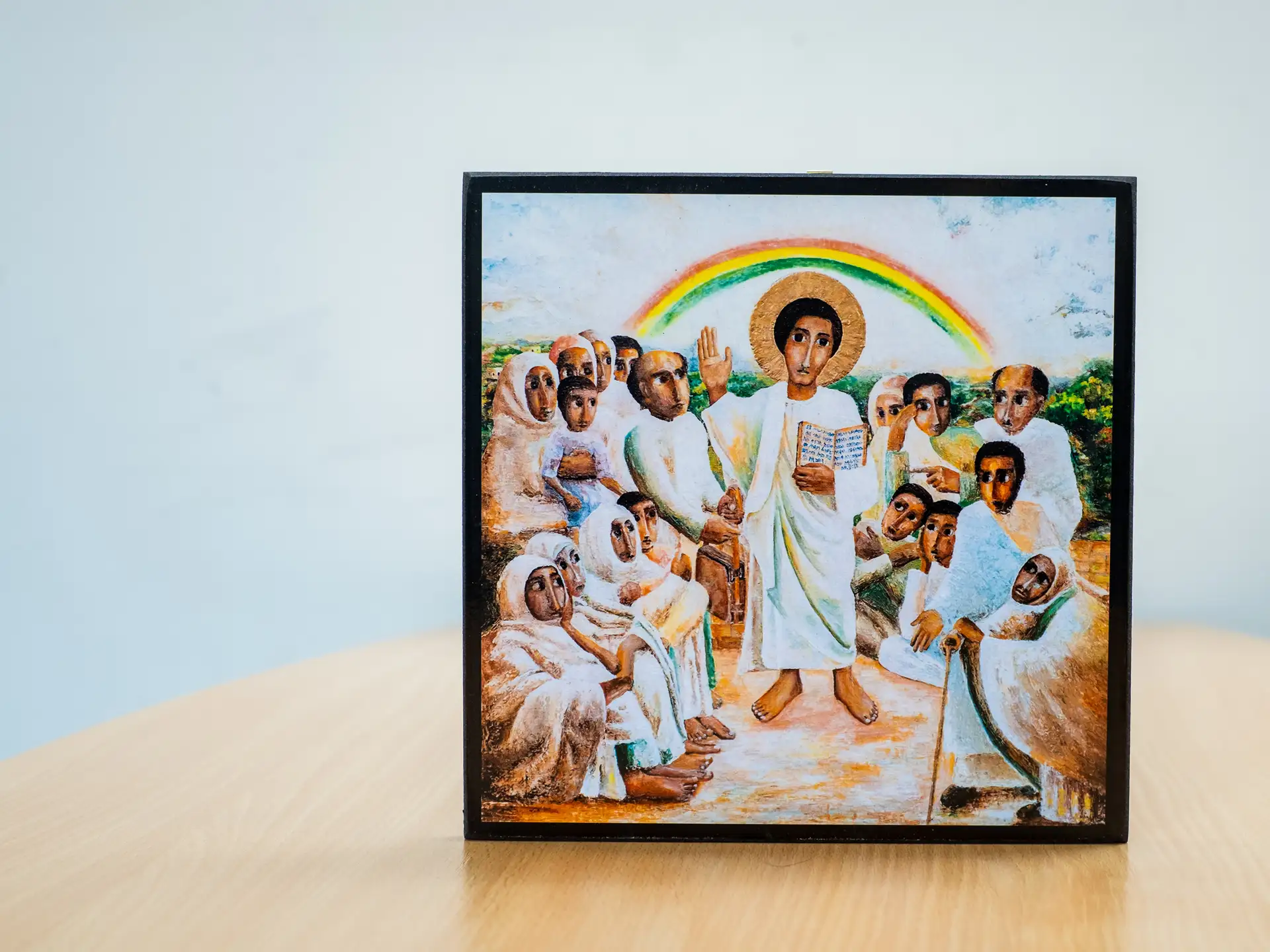
Jubilee icon reflection sheet
An information sheet about the symbolism contained in theJubilee 2025 icon as well as some questions to aid personal reflection. This can be used in venues the icon is visiting or for personal prayer and reflection.


This Jubilee icon was painted by Mulugeta Araya from Ethiopia.
In order to celebrate and commemorate the Jubilee Year 2025, Pilgrims of Hope, CAFOD commissioned an icon from artist Mulugeta Araya in Ethiopia, for the Catholic Church in England and Wales.
Ethiopia was chosen because of the strong tradition of iconography within the country and to demonstrate that this is a global Jubilee - not just something that is happening in England and Wales.

Buy your own reproduction of the Jubilee icon to venerate in your parish or at home.
All the profits will be used to support our work providing practical help to our sister and brothers living in poverty around the world.
The icon interprets Jesus' teaching of healing and liberation in the Synagogue in Luke 4:16-21, which refers to Isaiah 61:1-2. This passage is particularly relevant to the Jubilee given its emphasis on bringing good news to those who are poor, and liberty to those who are captive or oppressed.
In this passage, Jesus reads from the scroll of Isaiah as follows:
The Spirit of the Lord is upon me, because he has anointed me to proclaim good news to the poor. He has sent me to proclaim liberty to the captives and recovering of sight to the blind, to set at liberty those who are oppressed, to proclaim the year of the Lord’s favour.
As Jesus finishes teaching, and rolls the scroll away, he declares that he has come to fulfill this Scripture.
The icon portrays Jesus faithfully in the Northern Ethiopian tradition and is consistent with Ethiopian facial expressions and clothing, such as the women's head coverings.
Take a moment now to explore the meaning contained within the icon by watching the video below.
Mulugeta Araya, 30, is an artist and an engineer who studied at St Mary's College, Wukro, in Ethiopia, which is supported by CAFOD.
St Mary's offers vocational training for young people in agriculture, IT and accounting as well as the arts. The college also takes part in programmes to improve food security, the supply of water, and emergency response in the area.
Find out more about our work in Ethiopia
Watch the video below to hear more about Mulugeta's faith and his inspiration for painting the icon.

An information sheet about the symbolism contained in theJubilee 2025 icon as well as some questions to aid personal reflection. This can be used in venues the icon is visiting or for personal prayer and reflection.

A poster with the Jubilee icon to download and print for your displays.
Find out more about how to be a pilgrim of hope with us in the Church's holy year.
Discover our prayers on Jubilee themes.
Education resources, events, activities, information and ideas for teachers to celebrate the Jubilee in schools.
Your questions about the 2025 Jubilee Year: Pilgrims of Hope answered.
Recommit to our global family this Jubilee year by pledging a transformative monthly gift, and you’ll receive our weekly gospel reflections by email.
Our weekly email reflections include reflections on the Sunday gospel, and ways in which you and the wider CAFOD family can give, act and pray with us during the Jubilee Year.
If you'd prefer, you can sign up for weekly reflections without pledging a monthly donation.